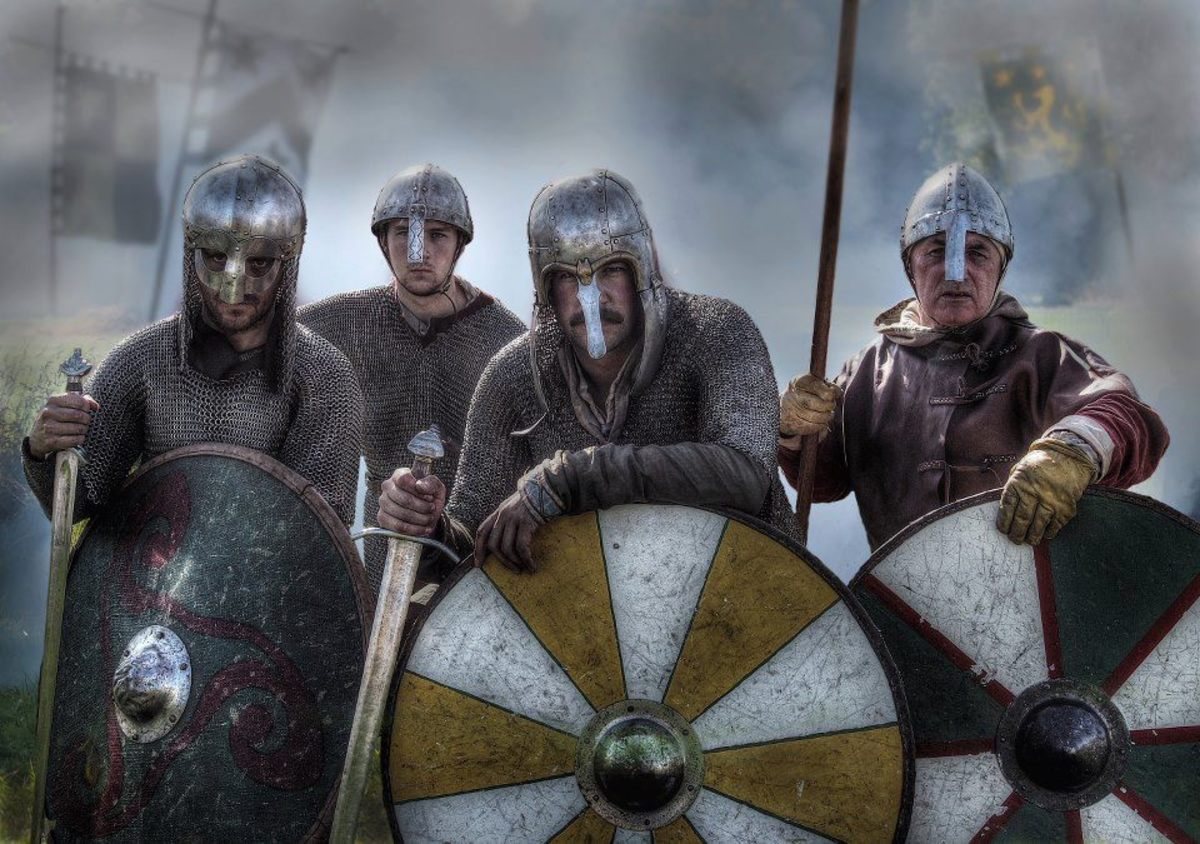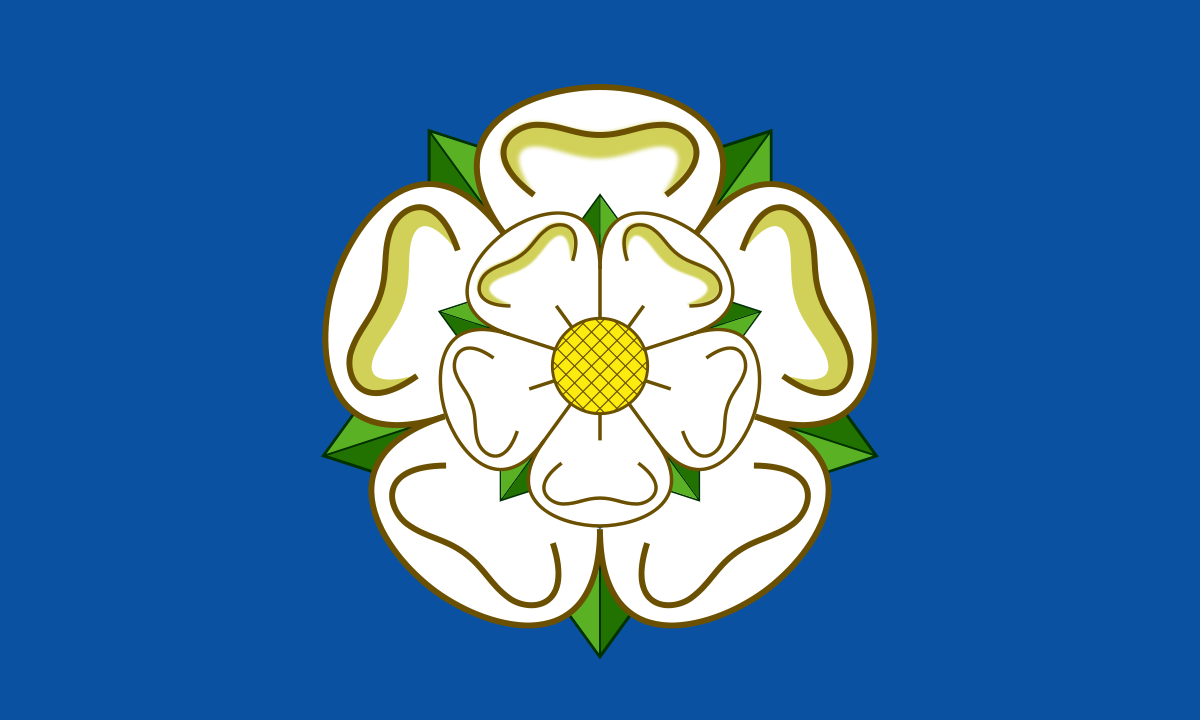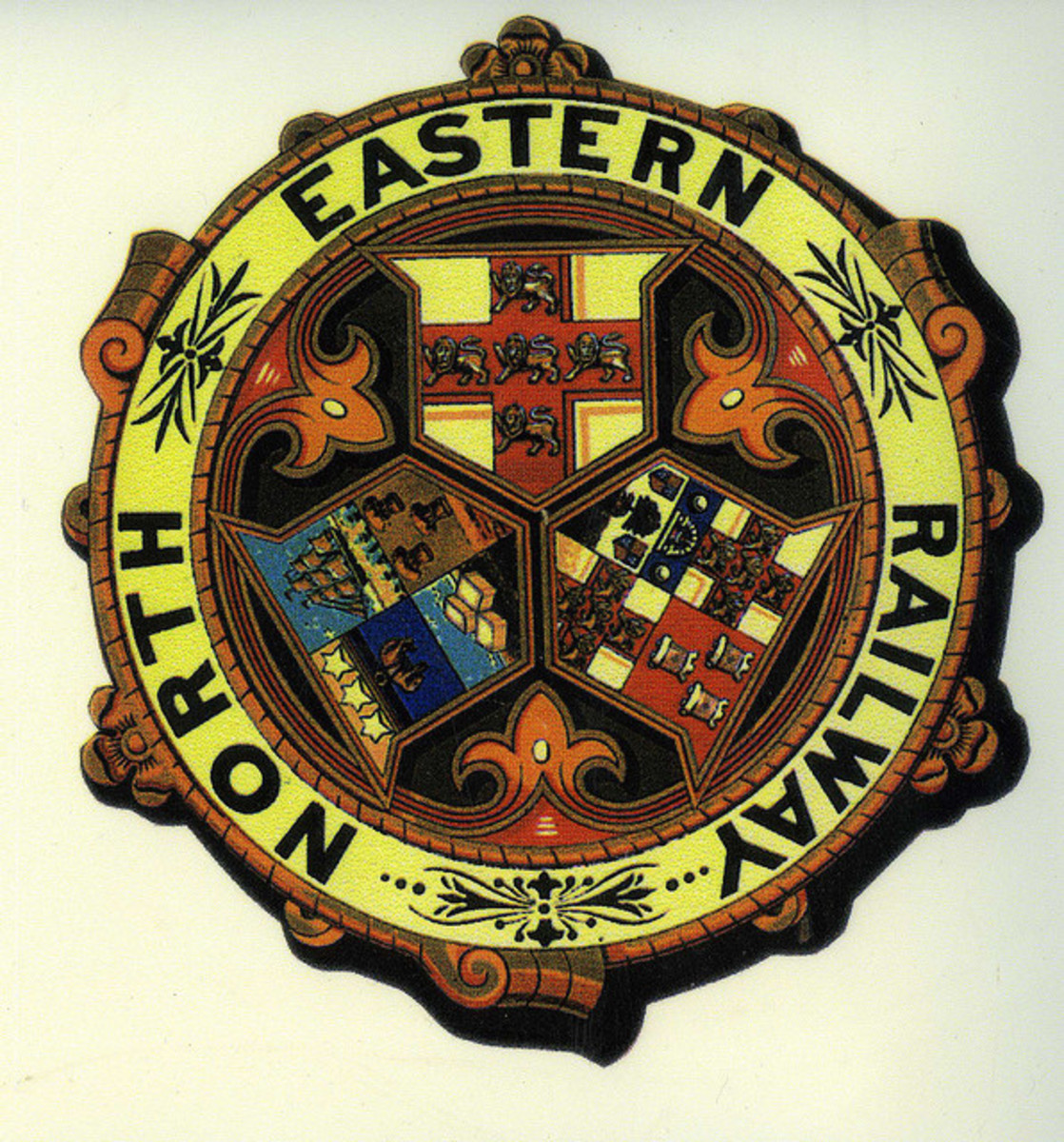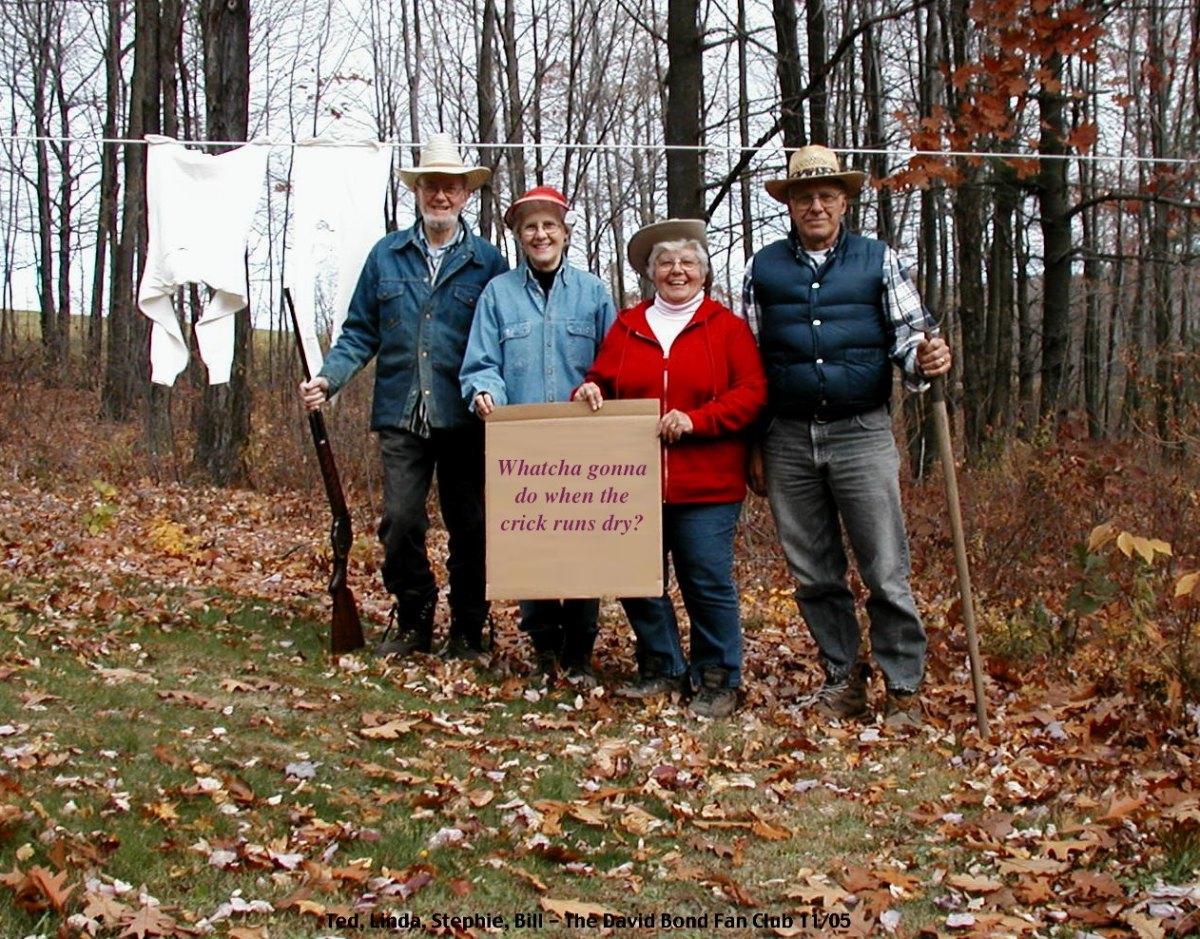Hunding's World - Piecing the Jigsaw: People, Places, Plans, Purpose

Find your way around the names, the way ahead and the way of life
A few pointers might be needed to ease your reading of HUNDING'S SAGA
The settings are in the Northern Europe of the early Middle Ages; closer, the British isles, Scandinavia and the East. The saga begins on the east coast of Jylland - Jutland - at the time of King Harald Gormsson ('Bluetooth') . The boy Hunding witnesses a raid on his fishing hamlet, sees his father slain, and his grandfather die of a heart attack before he can lift a sword. His mother and childhood sweetheart are taken as thralls - slaves - to be sold in the east or elsewhere further afield. He spends his formative years with an old couple who have seen their best days and raised offspring of their own. They can't bear his leaving, but know he must take a look out into the wide world - to find himself.
He leaves Denmark from Ribe on the western Jutland coast on an English ship, crewed by men from York - Jorvik to the Danes, Eoferwic to English folk - owned by a wealthy Aenglish (English) merchant who likes a gamble - a real Yorkshireman! There is one other Dane amongst the crew of the small trading ship, a 'knarre'. Skuli keeps himself to himself and 'plays his cards close to his chest'. The Englishmen are open and friendly, and they are Christians, as is Osferth their master. Hunding believes in Thor, champion of the common man, and wears an amulet around his neck. Mjollnir, Thor's hammer is used to smite his foes, the frost giants amongst others. In legend Mjollnir grows to size when needed and breaks open the giants' skulls when he throws it at them. But as with all myths, the same giants are raised from the dead to threaten Thor and the Aesir, the 'upper' house of the gods.
His beliefs notwithstanding, Hunding learns to like his crewmates and his merchant master. He goes with Osferth when out for 'a flutter', to keep him from harm by those jealous of his winning streak when he uses the loaded dice given to him by his brother-in-law, a thegn of the East Thrijung (Thirding, or Riding).
Osferth also deals with the nobility, friendly as he is with the ealdorman - the predecessor of the earl before Knut's time - and other merchants of York who import luxury goods for the nobility to spend those riches they have left over from paying the king his dues.
York is home to one of two ealdormen of Deira, the southern half of Northanhymbra - Northumbria - who lives at the fortified hall, the Earlsburh, built on the foundations of the Roman governor's palace. The Earlsburh issited on Marygate near the river Ouse, not far from Bootham Bar. Osferth would have a warehouse by the Ose - Ouse - his home close by where his wife Wulfgifu and daughter Wulfwila live with him. Accommodation is given to Hunding in the upper part of the house, but Wulfwila will not show friendliness toward him at pain of distaste from her mother. And nor does she until she hears of him rescuing Osferth's crewmen from a bear attack upriver on the Deruwent near Maeltun - Derwent near Malton. - He had been taking goods to her mother, Wulfgifu's family home. Wulfwila is impressed by his heroism and offers herself to him as reward.
When at one time Osferth takes Hunding to the home of an Anglo-Danish thegn near Thirsk - Treske - the thegn takes a fancy to Osferth's horse and wishes to gamble for it against his own horse. He loses - Osferth has been using the loaded dice - and turns nasty when he tests out Osferth's dice. Hunding and Osferth make their escape through Sowerby - Suthreby - back to York, pursued by the thegn's men.
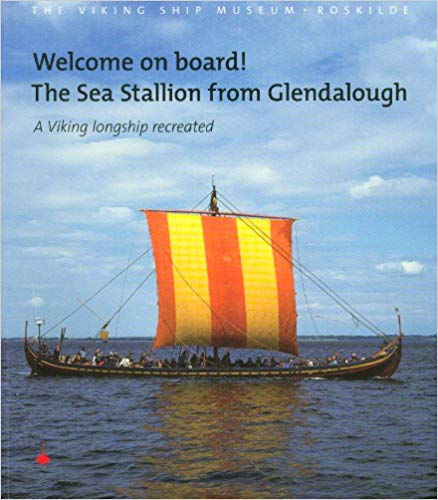
See how the Norsemen's ships came together from looking for the right trees, to the craftsman's art, the ropemaker, the sailmaker and the mastmaker. There were ways of bringing all these skills together in one majestic work of art and technology, and those who sailed in them would teach many to fear their coming.
Warfare rears its head in Ivar's adventures, fighting in the east against the Turks and around England with Knut and his jarls against Aethelred and Eadmund

Danes, Angles, Anglo-Danes and Gaels - the community in the Danelaw and Viking Jorvik
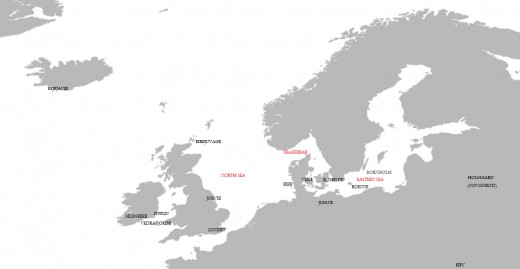
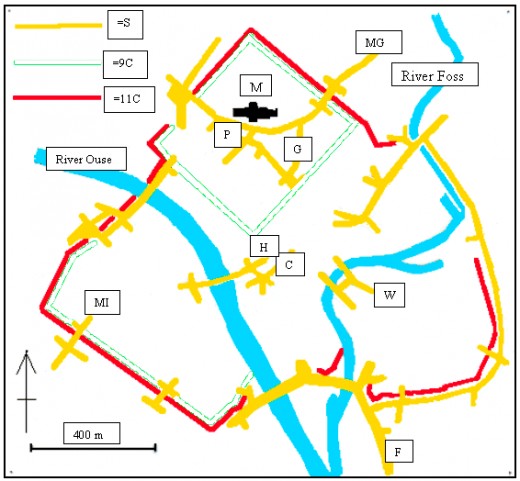
Background tapestry...
Aelfred and Guthrum agreed the division of the kingdoms on the east coast regions that had been settled by the Angles from an area now known as Schleswig Holstein, previously Slesvig in Denmark and Angeln in North Germany. Western Mercia - Mierca or Myrca - was administered by the West Saxons. To the north was Northumbria - Northanhymbra - and in the east was the Danelaw. South-east from that was Guthrum's own kingdom of East Anglia - Aengla - bordering on the East and Middle Saxon enclaves.
In Hunding's time the kingdom of York was ruled intermittently by Norsemen Eirik Haraldsson ('Blood-Axe') and Sigtrygg/Sihtric 'Caech' (Squinty) and Wessex kings Aethelstan and Eadred, grandsons of Aelfred. By the time Hunding came to Jorvik Eirik Haraldsson was in his last year of rule, defeated in an ambush on Stainmore Common. Sigtrygg 'Caech' was ousted after the legendary Battle of Brunanburh by Aethelstan. King Eadred ruled for a while and a succession of short rules followed from Wessex. Aethelred 'Unraed' was crowned king by the time Hunding left with Wulfstan's cargo for the eastern Prince Vladimir, as suggested by Lifing who wanted to give them as a gift - along with Hunding's ship Braendings Slange - to the Jomsviking leader Palnatoki, a friend of the Danish Thorkell 'Havi' (the Tall). King Harald Gormsson, ('Blue-Tooth' on account of his love of blueberries) tolerated the Jomsvikings as long as they didn't raid on Danish soil. His son Svein Haraldsson, 'Forkbeard' outlawed the Jomsvikings and they were soon disbanded but some carried on raiding from Jumne until Svein had the fortress razed. This would have been whilst Hunding was in the east, between Holmgard (Novgorod), Konungagard (Kiev) and Miklagard (Constantinople) on an errand for Prince Vladimir. By the time Hunding was back in Scandinavia on his way to Jorvik Svein Forkbeard was making ready for his first foray against Aethelred to exact a penalty for the St Brice's Day massacre. Svein's sister Gunnhild was one of the victims of the killings. On Hunding's return to Jorvik by way of Roskilde - where he has a dalliance with one of Svein's daughters - takes everyone unawares. Wulfwila has been married to a young thegn and Osferth has a new 'minder'. I won't give you too much detail, it'll spoil things for you..
The towns, cities, settlements and people: -
Aengla Land ....................... England (Aenglisc - English)
Aarhus ................................ main town of eastern Jutland;
Beoferleag .......................... Beverley, East Riding;
Bootham .............................. north-western quarter of York, west from Minster;
Bornholm ............................. Danish island in Baltic southward of Sweden, main town Roenne, [original name Borgundarholm, some of whose inhabitants migrated south to Burgundy, where the province gets its name];
Burtun .................................. Burton (on Trent), means 'farmers' town');
Deira...................................... southern half of Northumbria, Tees to Humber, later Kingdom of York and Yorkshire;
Deorewent/Deruwent........... River Derwent, rises near Scarborough;
Dyflin ................................... Dublin, (Gaelic name means 'Black Pool') - originally established by the West Norse (Norwegians) it was seized by the Danes and used as a 'springboard' for invasion of Wessex and Northumbria;
Eastern Sea ........................ Baltic Sea;
Erse .................................... Angles' name for Irish;
Frisia/Friesland/Frieslanders .... north coast of Netherlands and Germany, inhabitants of Frisia;
Fyn ...................................... Funen, large island between Jutland and Zealand, main town Odense;
Gotland .............................. Swedish island south-east of Sweden, main town Burgsvik;
Gotaland ........................... Danish region on what is now the Swedish mainland, inland from the eastern shore of the Skagerrak;
Grim's by .......................... Grim's town, now Grimsby in Lindsey, north Lincolnshire;
Hedeby .............................. trading haven in south-eastern Jutland at head of Slejfjord (now Schlei Fjord, German Baltic coast);
Hlimrekr ............................ Limerick, western Ireland, settled by Danes;
Holmgard .......................... Novgorod, means 'island fortress' or 'city';
Horsens ............................ town on east coast of Jutland south west of Aarhus;
Hvarfe ............................... River Wharfe, rises in northern Yorkshire Dales;
Hviteby ............................. Whitby, north east coast of Yorkshire, formerly Streoneshealh (abbey founded by Saint Hilda);
Hymbra ............................ River Humber;
Jorvik (Eoferwic) ............ York;
Jylland ............................. Jutland, main towns (then): Aalborg, Aarhus, Kolding;
Kirkeham ......................... Kirkham near Malton on the Derwent, site of ruined Cistercian abbey;
Kolding ........................... town in eastern Jutland south of Vejle on fjord facing Great Belt;
Konungagard ................. Kiev, Norse name means 'king's fortress' or 'city';
Lindcylne........................Lincoln;
Lindisse...........................Lindsey, North Lincolnshire, south of the Humber;
Lille Baelt ....................... Little Belt, strait between Funen and Jutland;
Maeltun .......................... Malton, town on the Derwent (North Riding side of the river);
Miklagard ...................... Constantinople, means 'great fortress' or 'great city';
Northanhymbra ............ Northumbria, the kingdom north of the Humber;
Northmandige .............. Normandy, duchy founded by Hrolf 'the Ganger';
Ribe ............................... mediaeval haven on Jutland's west coast, a haven hidden from the severe weather of the North Sea;
Richale .......................... Riccall on confluence of rivers Ouse and Derwent, north of Selby;
Rus ............................... Swedish mercenaries in pay of Slavic Russian princes, where Russia's name originated;
Saelgeby ...................... Selby, south from York on River Ouse;
Sjaelland ...................... Zealand, main Danish island with (then) main town Roskilde in the north on Roskilde Fjord nearby previous centre Lejre/Leithra ;
Skaane ......................... Scania, Danish region, now south-western Sweden;
Skakkelthorp .............. Scagglethorpe, east of Malton;
Skarthiburh ................ Scarborough, founded in early 10th Century by Icelander Thorgils Skarthi ('Harelip') - see the Hub on the warrior poet Kormak;
Snotinghaham ............ Nottingham, one of the Five Boroughs of the Danelaw;
Soenderstrand ...............fictional hamlet, home of Hunding on E. coast of Jylland;
Staenfordes Brycg ......Stamford Bridge, east of York;
Store Baelt .................. Great Belt, strait between Funen and Zealand;
Suthreby ..................... Sowerby, means 'town to the south of' Treske (Thirsk);
Svear .......................... Swedes, one of the East Norse peoples;
Swalge ....................... River Swale, rises in northern Yorkshire Dales (means Swallow);
Tese ........................... River Tees, rises in northern Pennines, now Cumbria, was North Riding;
Treonta ...................... River Trent;
Treske ....................... Thirsk, 26m north of York;
Vejle .......................... town on east coast of Jutland (south-west of Horsens);
Yre ............................. River Ure, rises in central Yorkshire Dales;
Some Norse/Danish geographical references as used in England and Scotland
by is a small town - as in Whitby;
thorp is a village, now thorpe - as in Scagglethorpe;
thwait is a clearing, now thwaite - as in Husthwaite;
holm is an island, written now on English maps as: holme - as in Axholme;
toft is a farm - as in Lowestoft;
garth/gard is a fortified settlement/farm or walled palace such as the Earlsburh in York or as in Holmgard (Novgorod), Miklagard (Constantinople), Koenungagard (Kiev)
*These references also apply to the RAVENFEAST sagas, which will play out largely in the northern and eastern shires of England before moving away to Denmark and the east. Each book in the saga series carries a glossary of terms and place names .
Crossing between seas involved heaving ships between river heads. Sometimes there were helpers, at a price...
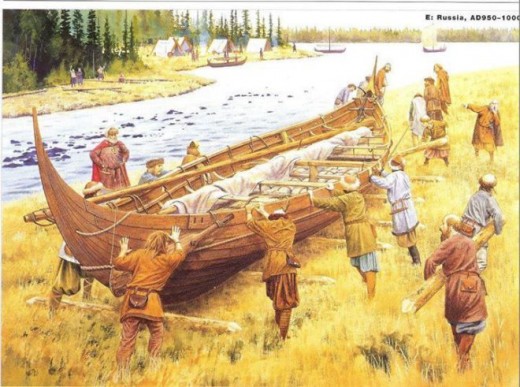

The Norsemen, Danes and Svear drew from life that which would profit them. The search for gold and silver drove them across mountainous seas, up rivers and through channels to take men off guard and free them from the burden of wealth. Trade brought lucrative contacts though, and the way lay clear to merchants all the way from the far north of Finnmark (Finland) for furs and sealskin, to Holmgard (Novgorod) for Asian silks brought by Arab traders, for walrus ivory brought from the north by hunters. Koenungagard (Kiev) being closer to Byzantium would have witnessed great wealth made. Further south in Miklagard (Constantinople) treasures from the Holy Lands and from Samarkand in the east came Chinese silks as well as Ivory sculpture or body ornament, and spices found their way from the Orient. Fedir Androshchuk relates the exchange of knowledge across the broad expanse of what is now Russia, the crossroads to the Orient and Arabia. Slaves were taken in exchange, fair-haired Gaels, Angles and Saxons. English swords and other weapons from Jorvik (York) and other crafts hubs across Britain were highly sought after.
Street Life in Jorvik


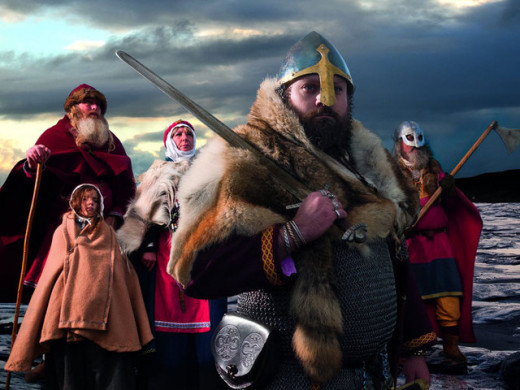
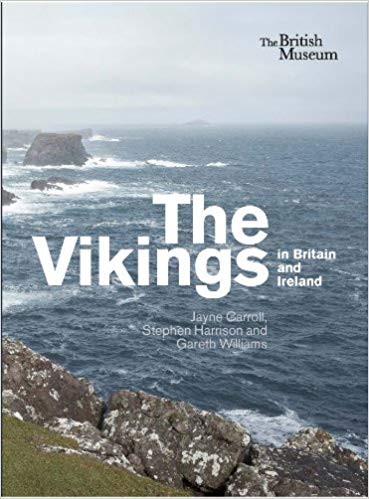
From the middle of the 9th Century Danes and Norsemen drew their wealth from their conquests in Britain in general, and from England in particular.yGold and silver were derived from church treasures in raiding, slaves were exchanged for weaponry with Irish kings who subjugated their conquests in Ulster or Leinster or wherever else they expanded their power, Angles and Saxons might find themselves in eastern slave markets. Aethelred made it easier for them to gain wealth just with the threat of their shadow... And then we had a Danish empire builder for a king. Knut/Cnut may be remembered for telling the waves to go back, but dig deeper... He held lands between Wessex and southern Sweden and north to Oslo Fjord, and whilst he reigned no-one attacked the kingdoms he ruled over. He was even able to go on pilgrimage to Rome without fear of his empire falling apart..
© 2011 Alan R Lancaster

